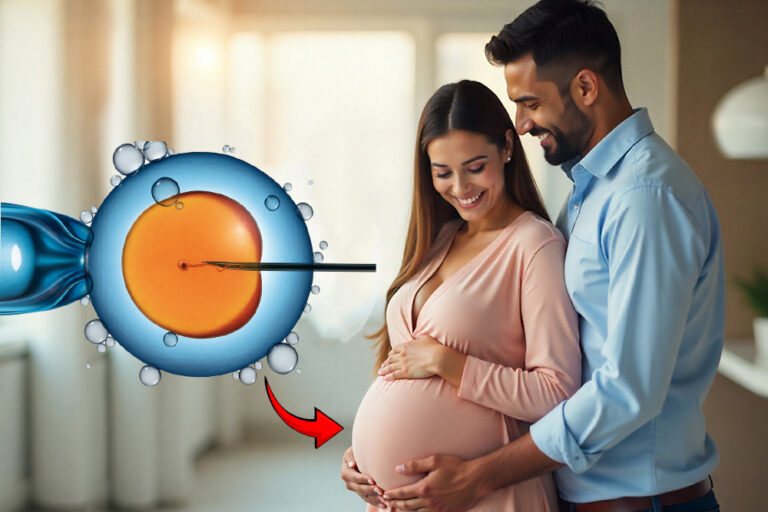Introduction
A frozen embryo transfer procedure is commonly known as FET. This procedure is an IVF treatment where a cryopreserved embryo created in the previous egg retrieval cycle is transferred into the uterus. Frozen embryo transfer(FET) is gaining popularity due to its safe procedure and high success rate.
What is Frozen embryo transfer(FET)
In a frozen embryo transfer process, the female patient undergoes regular IVF treatment. The difference in the procedure is that instead of the embryos being transferred into the uterus in the same cycle, they are frozen for future use. The female can choose to freeze her eggs or opt for donor eggs. These frozen embryos are transferred at a later stage when a woman recovers from IVF treatment. The effect of desynchronization is also reduced.
Advantages and disadvantages of frozen embryo transfer
Frozen embryo Transfer has its benefits and drawbacks.
Advantages
Higher success rate: The FET procedure provides more opportunities for transfer. Hence, there are higher chances of getting pregnant. When the embryos are frozen, you can try again without undergoing ovarian stimulation or egg retrieval even if the IVF is unsuccessful.
Cost-effective procedure: The FET procedure is relatively cost-effective as there is minimal medication and no anesthesia or egg retrieval process. With a single IVF procedure, there will be opportunities for multiple FET cycle opportunities.
Easier scheduling of FET cycles: The FET schedules can be done at the patient’s convenience. Once the treatment starts, oral estrogen will be given so that the uterine lining is prepared for a transfer. Later, progesterone supplements are given so that the female patient’s body is prepared for pregnancy.
Genetic testing: The FET allows genetic testing. The preimplantation genetic screening(PGS) helps examine the embryo’s chromosomal material. This test depicts the normal and abnormal chromosomes. This helps in the transfer of healthy and normal embryos only. The PGS is also known as PGT – A (preimplantation genetic testing).
The PGT-M, previously known as the preimplantation genetic diagnosis, is suitable for couples who already have the risk of passing on the single gene order. Some diseases like sickle cell anemia, cystic fibrosis, hemophilia, etc., can be identified on the chromosomes.
The PGT-SR is a test for the structural rearrangement of chromosomes. This test gives results for the right chromosomal material but has translocated or switched places. This can lead to chromosomally abnormal or unbalanced eggs. The PGT-S test can help to identify such chromosomes.
Longer conceiving time: A frozen embryo transfer takes longer than a fresh embryo transfer. A fresh embryo transfer can take 3-5 days after the egg retrieval, whereas a frozen transfer cannot happen before 3 weeks after the IVF treatment. If any abnormality is found, it takes a longer time.
Embryo and thawing rates: The entire process of the FET process requires vitrification followed by thawing. Vitrification is the freezing of embryos, and thawing is warming. Not all embryos survive through this process. But fortunately, the survival rate is high.
Can you get pregnant before frozen embryo transfer?
There can be several questions on pregnancy when undergoing frozen embryo transfer. The possibility of getting pregnant for a patient undergoing IVF with a subsequent frozen embryo transfer and preimplantation genetic testing (PGT) is high. An unprotected intercourse a week before egg retrieval may result in spontaneous pregnancy. This can be before the opportunity of egg transfer.
Frozen embryo transfer cost
The cost of the frozen embryo transfer treatment in India may be between 40,000 INR – 60,000 INR. The cost of the treatment may vary from city to city. The charges may be more in metro cities.
What are the chances of frozen embryo transfer?
Many fertility specialists indeed echo that frozen embryo transfer is far more successful than fresh embryos during assisted reproductive technology.
Frozen embryo transfer is undoubtedly a boon for all those who are depressed that they cannot conceive naturally. However, the success rate depends on age, health factors, and lifestyles.
For women below 35 years or below, there is a high chance of 60% success in pregnancy per embryo transfer. Women over 40 have a 30% chance of getting pregnant per embryo transfer.
Conclusion: Frozen embryo transfer is an effective treatment for those who struggle to conceive naturally. This treatment should be taken by a fertility expert who will help you to sail smoothly during the entire process and get you a high success rate.










